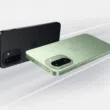
The LG V60 ThinQ rolled out earlier than usual this year, bringing LG’s next flagship into spring instead of its typical fall launch. We’re not sure if we’re going to see the LG G9 this year (or ever again, for that matter) but LG hopes the V60 can scratch the itch.
We're checking out LG's superphone, complete with its Dual Screen attachment, to see how it holds up against the 2020 crop of flagship smartphones. Let's dig in.
Design
The LG V60 ThinQ isn't a significant departure from LG's usual smartphone designs, but it is another iteration of refinements. It's a seriously big phone, though.

With a 6.8-inch screen, this is easily one of the biggest phones on the market. Coupled with the Dual Screen attachment and you've got a behemoth of a device, which is a good and a bad thing. More of a good thing, if you can live with the size. It's got a waterdrop notch up top, so hopefully you're on board with the age of display cutouts. LG's still not utilizing hole punches.
The SIM tray/microSD card tray is set in the top of the phone, while the bottom houses a speaker, USB-C port, and headphone jack. The power button is on the right side, and you'll find volume buttons and the Google Assistant shortcut key on the left side. It all should be very familiar if you've used LG phones before.
We reviewed the blue model with a copper-ish gold tint on the edges of the phone. The back is a little bit more of a fingerprint magnet than I'd like, but I think the color scheme and design looks fantastic. This is probably my favorite looking LG phone in the last few years, and the solid build quality seems like it makes the bigger size not such a big deal.
The Dual Screen attachment hasn't seen much of a design change from the last couple models, like with the LG G8X. It's still plain black, still mirrors the display on the regular phone, and still does all the same stuff. It does, unfortunately, make a large phone
Hardware
| LG V60 ThinQ | |
|---|---|
| Released | March 20th, 2020 |
| Software | Android 10 |
| Display | 6.8-Inch P-OLED 2460x1080 display, 60Hz refresh rate, HDR10+, Gorilla Glass 5 |
| Processor | Qualcomm Snapdragon 865 Octa-core, 64-bit, Adreno 650 GPU, X55 5G Modem |
| Memory | 8GB RAM |
| Storage | 128GB, UFS 2.1 |
| MicroSD Support | Yes |
| Rear Cameras | 64MP main camera, 13MP ultrawide, 0.3MP depth sensor, Dual-LED dual tone flash |
| Front Camera | 10MP selfie camera |
| Security | In-Display Fingerprint Sensor |
| IP Rating | IP68 |
| Audio | Dual Stereo Speakers, HiFi Quad DAC |
| Audio Jack | Yes |
| Connectivity | Bluetooth 5.1, WLAN: 802.11 a/b/g/n/ac/ax, WiFi 6, 2x2 MIMO, OTG, 5G |
| Battery | 5000mAh |
| Charging | Qualcomm Quick Charge 4.0+ |
| Wireless Charging | Yes |
| Dual SIM | No |
| Connectivity | Bluetooth 5.1, NFC, WiFi 802.11 a/b/g/n/ac/ax, WiFi 6, OTG |
| Dimensions | 169.3 x 77.6 x 8.9 mm |
| Weight | 218g |
| Colors | Classy Blue, Classy White |
| Price | $899 w/ Dual Screen |
Performance
The LG V60 ThinQ uses a Snapdragon 865 CPU with 8GB of RAM. It spares no expense when it comes to hardware, at least under the hood. We won't spend too much time talking about how well the device performs, because, well, it's fast. These phones have been fast enough for a while, and the V60 isn't going to slow down, either. The extra RAM helps, and even though it's not as much as what OnePlus crams in, 8GB is still plenty for even intense multitasking.

The display is fantastic, with a sharp resolution and bright, vibrant colors. Might not quite as nice as a Samsung (or OnePlus) display, but fantastic for watching video. However, it's only a 60Hz display; LG isn't upgrading to a 90Hz or 120Hz screen like many of their competitors. That feels like a strange move when high refresh rates are the upgrade for most phones this year. The in-display fingerprint scanner is fast, too, and more on par with something from OnePlus as opposed to Samsung.
For all the effort LG puts into the HiFi Quad DAC in their phones, I'm still a little disappointed in the speaker quality on the V60, but it still rounds out a very capable media experience.
Battery
There are a lot of different things to talk about with the V60, but the battery is actually probably the most exciting thing here. The battery life on this phone is fantastic, and that's probably partly due to LG limiting the phone to just a 60Hz display. It's a 5000mAh battery and it just seems like it never dies. You could very realistically push two days out of this phone even with serious usage.

The Dual Screen display doesn't seem to impact battery too badly, either, which is a plus. You'll lose about a quarter of the battery with constant use of two screens, which isn't a terrible tradeoff. Leave it at home if you're trying to maximize battery life, though.
Software
The LG V60 ThinQ is currently running Android 10 with all the latest software from LG. It's not significantly different from older phones, but there are a couple new tweaks and some specific additions for the Dual Screen attachment. Dark mode is finally here natively in LG's software, and it works like you'd expect out of Android: schedules, auto-changing, etc.
The new UX focuses a little more on floating notifications and cards, which also seems to be the trend for newer Android skins, and LG has their own implementation of contextual actions. You can set up specific profiles for your location, like when you're at home or at work, and you can have certain apps launch when you plug headphones in or connect a Bluetooth device. You can have your favorite music app when you connect your headphones, for example, or launch a certain game when your Bluetooth controller pairs with your phone.

The Dual Screen adjustments are pretty cool, especially if you use the accessory often. You can run apps in a wide view mode where they stretch across both screens, and you can have one screen set as a game controller while your game is on the other display. There's nothing significantly improved over the last iteration on the LG G8X, so you can dig into that review if you're curious, but just know that LG does a mostly good job of making the accessory feel natively supported. There are still some pain points, like the extra screen lacking a gyroscope, and some apps just not supporting it well, but it's actually a worthwhile addition to the V60 experience.
LG's software definitely feels like it's improved over the last few years, but it still kind of feels like something's missing. LG has fallen in line with making their skin more in line with regular old Android, which is fine for most people, but it does make it hard for their phones to really stand out anymore. Samsung flipped TouchWiz on its head and everyone's felt really great about One UI, so it's not a huge stretch to think LG could pull off a similar software redesign.
Camera
LG's latest round of cameras have been good but just not quite enough to compete with the top-tier phones on the market. Unfortunately, the V60 seems to fall into that same trend.
The camera here is good. Low-light performance is passable, and it manages to capture a ton of detail with a quick shutter speed.
But it's still lacking that extra little magic, like the insane low-light performance you can get out of a Galaxy S20 or the HDR on steroids from a Pixel 4.
The phone comes equipped with an ultrawide lens, a standard lens, and a depth sensor, plus all the extra camera features you'd expect. Live photos, smart AI modes, and action shots are all here, so you can definitely snap some great shots with the V60. Unfortunately, LG just still isn't going to beat out the competition.
Worth it?
LG has found its niche with these phones, and if you fall into that niche, there's a ton to like. For a fraction of the price, you're getting a phone that's a serious competitor to the Galaxy S20 Ultra. It's similarly sized with similar performance, but at a fraction of the cost, even with the Dual Screen accessory.

If you're a power user still itching for headphone jacks and the best specs for the money, it's hard to look anywhere besides the LG V60 ThinQ. There's clearly still a discrepancy between the phones cameras, and the higher refresh rate display is nice; if you're invested in Samsung's software experience, that might swing you over, too.
But bang for the buck, LG seems like they've rolled out one of the best value propositions in the flagship smartphone market.
Buy it now: LG V60 ThinQ

















Wife and I got two of these without the second screen on BOGO from T-Mobile. So basically like paying$400 each. These are good phones, but if you are a smartphone elitist or something then you should probably look elsewhere. It’s not an s 20 plus. But for the price this is a very nice phone and the build quality is very good. And that has the same processor as those $1,400 phones. I was fine with 6 gigabytes of RAM on my last phone so 8 gigabytes here is plenty. I will never pay $1,000 for a smartphone and I damn sure won’t pay more than that. I wasn’t crazy about the 1080p but honestly I can’t tell the difference. If you are a smartphone elitist you will look at the screen and it will look like it’s from the 1980s it’ll look like an absolutely horrible super pixelated mess. But in reality it looks perfectly fine. I am loving the battery life I’ll take a big battery over a super thin phone any day.
Small correction for you friend. The LG V60 has Qualcomm quick charge 4.0+, placing it above quick charge 4.0 and well above quick charge 3.0 which you have mistakenly entered in the specs here. And I personally am loving it with my V60 :). When you have a big battery, it’s lovely to have such fast charging tech to go with it.
Fixed, thanks for letting us know.
I do like LG phones. They just have to get their QA and timely OS updates in order, that’s all. Price-wise, LG needs to focus on mid range phones and stop trying to compete with Samsung at the high end. Any phone whose price is north of $700 won’t get my attention, regardless of the brand.